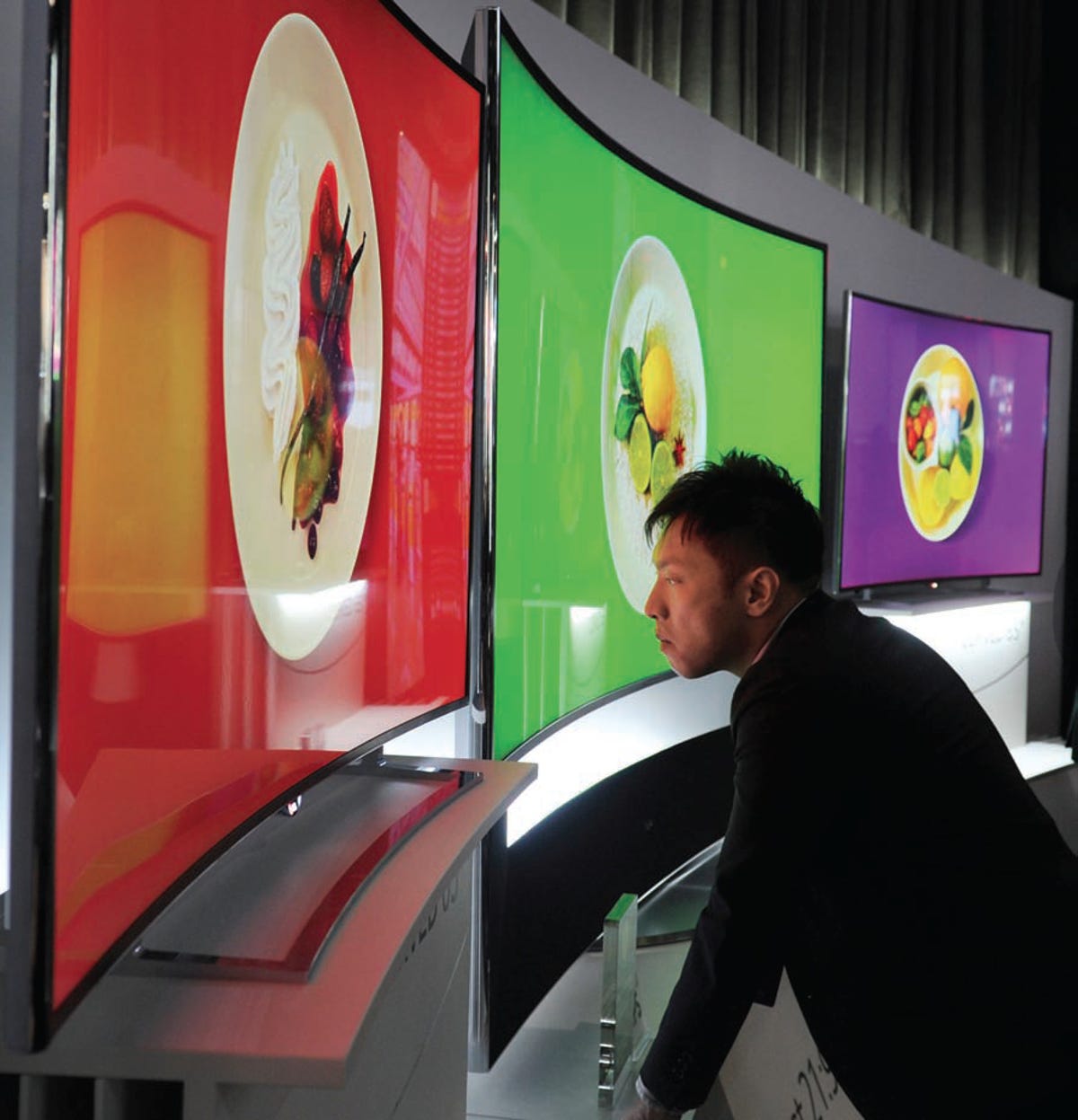
LG
The mainstream TV tech with the best picture is dead. RIP plasma.
If you’re a screen quality purist, LED LCD won’t cut it. Though they dominate the TV market, LED LCDs come with picture quality flaws, like uneven screens and poor contrast.
That leaves OLED — organic light-emitting diode — television as your only hope. It eliminates the need for a backlight and allows for ultra slim, even rollable screens, as well as world-beating picture quality. For now these TVs are manufactured by one company: LG Electronics.
A quick look back
Just this past fall, when I reviewed the least-expensive OLED TV yet, the $3,000 LG 55EC9300, I knew I’d found something special. It didn’t take long to realize that it had the best picture I’d ever seen.
Why? In the case of OLED, the contrast outclasses that of any LCD TV available. More important than resolution or screen shape, contrast between black and white provides the most visible picture-quality benefit, and these TVs are only going to get better.
But when will they get cheap enough to afford? Don’t hold your breath.
“We’re not going to sell a ton of OLED televisions in 2015,” says David VanderWaal, LG’s senior director of marketing. They’re too expensive. And LG doesn’t expect its 65-incher to fall below $7,000 by the 2015 holidays — almost a year out. Same-size, high-end 4K LCDs cost a third as much.
Not ready for the masses
The reason for the delay is production yield. Yield refers to the percentage of TVs deemed good enough to sell as opposed to discard, and relatively low yields continue to make OLED TVs more expensive to manufacture than their LCD counterparts.
More CNET Magazine
- For Sofia Vergara’s modern family, a modern home
- CNET Magazine celebrates spring and the home — the smart home
“With the introduction of the 55EC9300, yields have gradually improved,” says Tim Alessi, LG’s director of new products. LG won’t release specific yield information, but Alessi did say larger sizes and 4K resolution make manufacturing OLED more difficult.
That difficulty is preventing other TV makers from bringing OLED TVs to market. LG will stand alone as the sole OLED proprietor through 2015 at least. And unfortunately for video purists on a budget, LG has decided not to build 1,080p OLED TVs larger than 55 inches, going all-in with 4K. The higher resolution adds cost, but that isn’t a major concern for the company. The premium price of OLED is by design for now.
“We’re using OLED to gain brand perception,” says VanderWaal. “So OLED equals LG equals great televisions. There’s enough demand right now that we can’t build OLED TVs quickly enough. It’s something that people are going to ask for, not something we have to push through the market.”
Avoiding plasma’s fate
When asked whether plasma’s death provided a cautionary tale of sorts, Alessi dismissed the idea. Compared with dominant LCD, OLED is new and plasma was old — that’s the LG thinking. “Ultimately, the cost of manufacturing an OLED set should become cheaper than an LCD,” says Alessi. But he declined to give even a ballpark estimate of when that would happen. As far as video purists are concerned, it can’t come soon enough.






